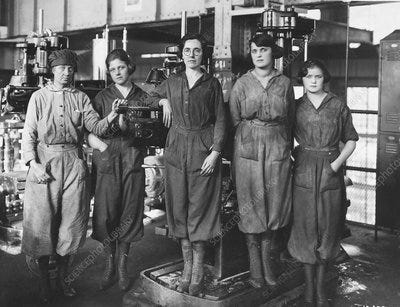Capitalism is a hungry beast, all teeth and appetite, devouring resources, workers, and time—chewing through generations like they were nothing more than disposable napkins. We know this. We live this. The world is crumbling under its weight, but instead of asking how we might rebuild, the powerful double down, tightening the screws, pushing us deeper into the machine. The system, they say, is inevitable. The free market is the holy grail, the invisible hand will guide us, the cream will rise to the top. But all I see is a handful of billionaires drinking that cream while the rest of us drown in the spillage.
And yet, the answer isn’t to burn it all down (though some days, the temptation flickers). The way forward isn’t the absolute eradication of capitalism but its transformation—reshaped, redirected, put on a leash. Enter social capitalism, the bastard child of competition and conscience, the middle path we should have taken before the world set itself on fire.
The Myth of Trickle-Down and the Reality of Rot
They told us to be patient, to work hard, to climb the ladder. But the ladder has been missing rungs for decades, and the ones at the top aren’t throwing down ropes—they’re pulling up the last remaining footholds. The neoliberal fantasy of trickle-down economics has been exposed as a fraud, a gilded illusion where only the crumbs make their way to the bottom, and even those are swept up by corporate lobbyists before they can nourish the starving.
Under unregulated capitalism, wealth doesn’t trickle. It hoards. It stagnates. It builds moats around the castles of the elite while the rest of us claw at the gates, wondering why the game feels rigged. It’s because it is rigged. And no amount of corporate-sponsored philanthropy can disguise the fact that billionaires shouldn’t exist in a world where children go hungry.
Social capitalism acknowledges this rot but refuses to let the fire consume everything. Instead, it takes the bones of the system—competition, innovation, economic drive—and grafts onto them the missing limbs: ethical responsibility, sustainability, equity. The goal is not to destroy wealth but to distribute it with intention.
Capitalism Can Work—But Not Like This
There is no denying that capitalism, in its rawest form, creates. It pushes boundaries, drives progress, builds empires. But without checks, it also exploits, destroys, and corrodes the very fabric of human connection. A system that rewards innovation should not be the same system that punishes those who don’t have the generational wealth to gamble.
Social capitalism argues that market incentives don’t have to come at the cost of human dignity. A thriving economy does not need to grind its workers into dust. And, most importantly, a government should not exist merely as a referee in the bloodsport of corporate expansion—it should be a participant, a force that guides and redirects, ensuring that progress benefits all, not just the chosen few.
It is not anti-business to demand living wages. It is not anti-innovation to place limits on wealth accumulation when that wealth is built on the backs of the underpaid and overworked. It is not anti-freedom to ensure that basic needs—healthcare, education, housing—are guaranteed for all. If capitalism is so efficient, then let it be efficient at serving humanity, not just those who can afford to play.
What Social Capitalism Looks Like
Imagine a world where businesses are rewarded not for how ruthlessly they cut costs, but for how well they treat their workers. Where profit is still a driving force, but it must coexist with ethical obligations. Where billionaires are no longer deified but dismantled—not through guillotine fantasies but through progressive taxation, reinvestment, and policies that ensure no single person hoards what could feed a nation.
Social capitalism doesn’t reject entrepreneurship or wealth creation; it simply says: not at the cost of people’s lives. It prioritizes reinvestment into society—strong labor protections, universal healthcare, subsidized education, green energy initiatives. It keeps the gears turning, but without the blood sacrifice.
Nordic countries have danced with this model and emerged not just functional but flourishing. They prove that free markets and social welfare can coexist, that the private sector and the public good do not have to be adversaries. There are blueprints, tested and proven. We just refuse to use them because those at the top would rather let the world burn than see their margins shrink by a decimal point.
The Future is a Choice
The world is at a breaking point. The status quo is unsustainable. The choice is not between capitalism and anarchy—it is between an unchecked system of exploitation and a reimagined, rebalanced future.
Social capitalism is not a utopian dream; it is the pragmatic evolution of a system that has outgrown its usefulness in its current form. The argument against it is not an argument of practicality but of power—who holds it, who fears losing it, who would rather see millions suffer than admit the system needs to change.
We have a choice. The only question left is whether we are willing to make it before it's too late.






This is outstanding. I’ve been sitting in the middle of this tension for years (as a person who reluctantly works in marketing but hates the consumerism it encourages), and I’ve been wrestling myself with what a path forward looks like. This is beautifully written and pragmatic, and I couldn’t agree more. Thank you for writing and sharing. :)
Doughnut Economics, Kate Raworth?